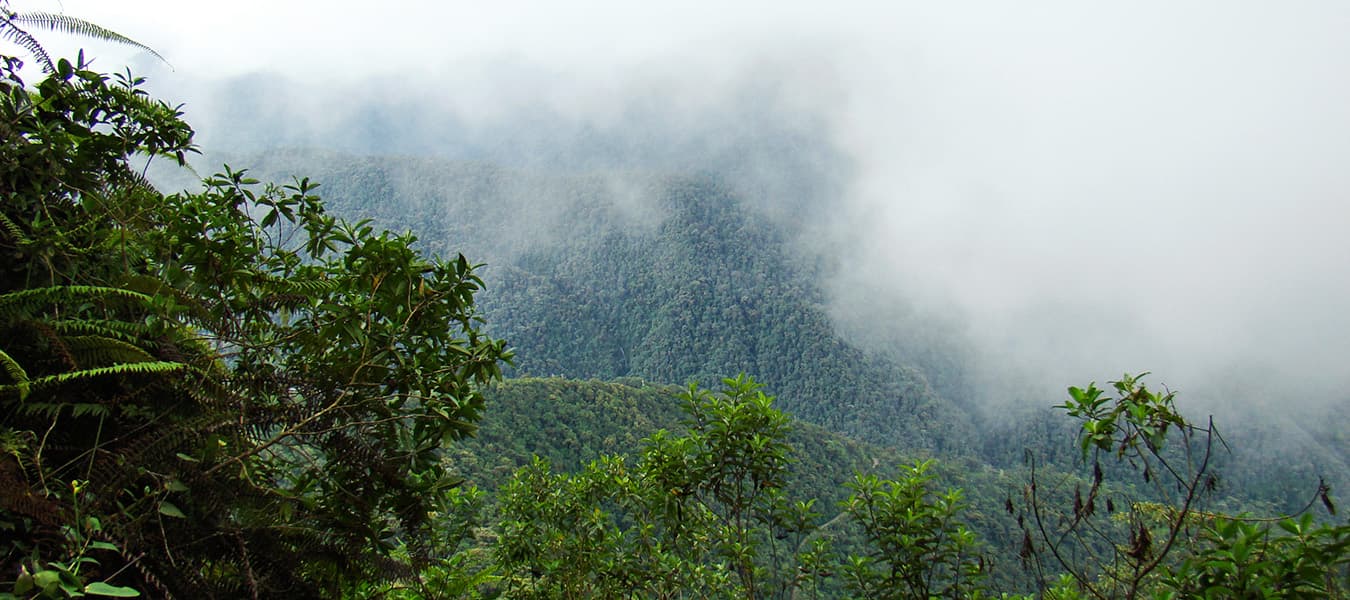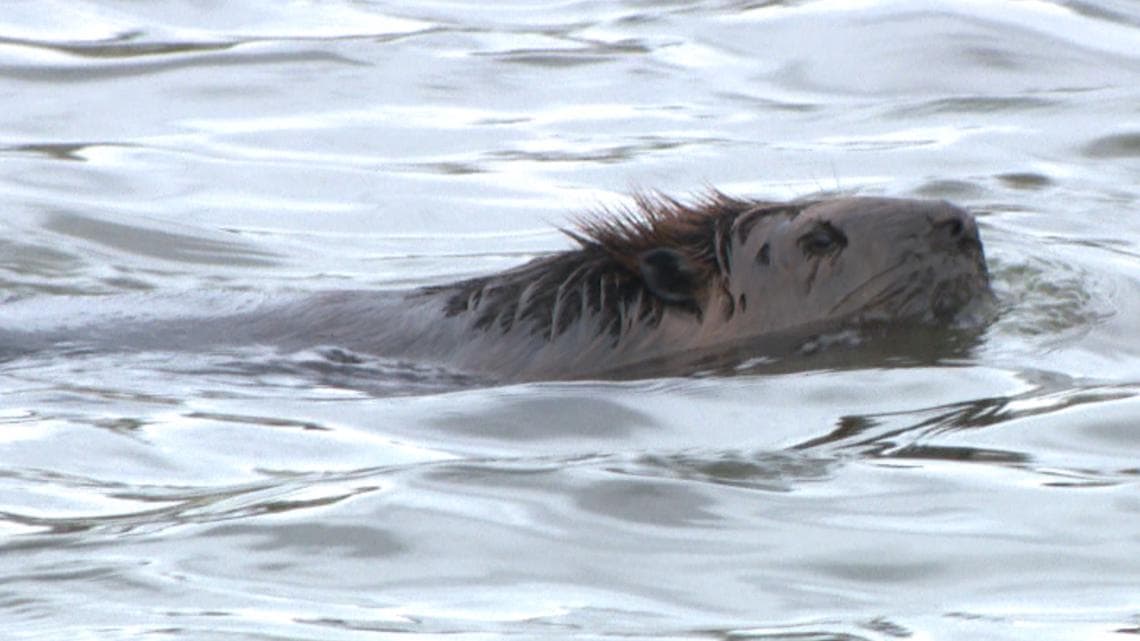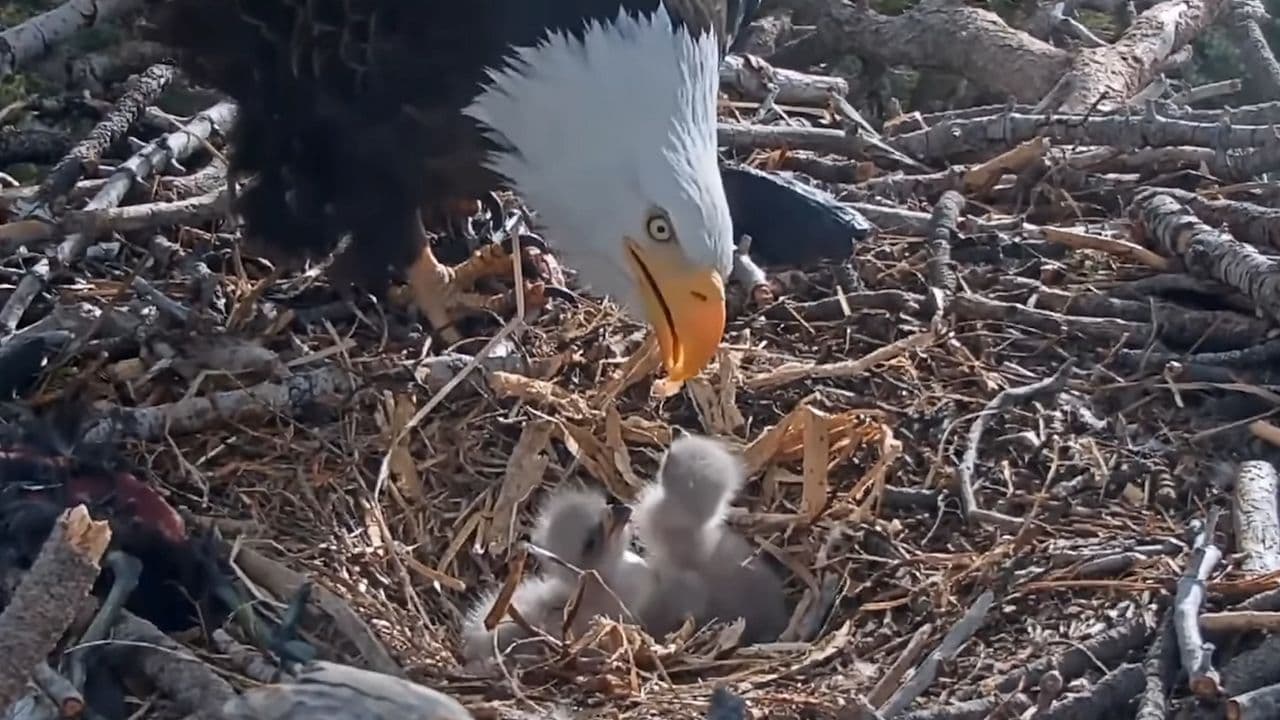
Amazing
Reviving the Andes: How ‘Cloud Trees’ Are Restoring Ecosystems and Ensuring Water Security
The Andes Mountains, stretching across South America, are a natural wonder rich in biodiversity. Among the towering peaks roam spectacled bears, pumas, and the mighty Andean condor. Yet, nestled high in these rugged landscapes grow forests of polylepis trees—often called “cloud trees” for their incredible ability to capture and release water. These ancient trees, though lesser-known, are vital to both ecosystems and the millions of people who rely on the Andes’ water sources.
The Unique Role of Polylepis Trees
Polylepis trees thrive at altitudes of up to 5,000 meters, making them the world’s highest-altitude trees. Their significance lies in their ability to absorb moisture from clouds and melting glaciers. The spongy moss that drapes their trunks stores and gradually releases this water, feeding mountain streams and, eventually, the Amazon River’s headwaters.
However, centuries of deforestation, grazing, and development have reduced the once-vast polylepis forests to a fraction of their original range. Today, only around 500,000 hectares remain—estimated to be just 1% to 10% of the historic coverage. The consequences are far-reaching: degraded ecosystems, eroded soil, disrupted water cycles, and increased vulnerability to flooding. For the millions living in the Andean foothills, these changes pose a growing risk to water security.
Reviving the Forests: A Community-Led Effort
One man determined to reverse this decline is Peruvian biologist Constantino Aucca Chutas. Inspired by his indigenous Quechua roots and deep respect for nature, Aucca co-founded Acción Andina in 2018. This ambitious reforestation initiative, in partnership with the US-based nonprofit Global Forest Generation and Peru’s Asociación Ecosistemas Andinos, aims to restore one million hectares of Andean forests by 2045.
“I grew up enjoying rivers and nature,” Aucca reflects. “I thought it would be fantastic if we could pass this to future generations.”
The effort began in Peru but has since expanded to Ecuador, Argentina, Bolivia, Chile, and Colombia. To date, Acción Andina has planted more than 10 million polylepis trees, thanks to the participation of thousands of indigenous families. This collective approach mirrors the Incan concept of Ayni and Minka—working together for the common good.
A Festival of Trees
One of the most striking events in this initiative is the annual Queuña Raymi festival, held in the valleys around Cusco. The festival is a cultural and environmental celebration that begins with traditional music, dances, and rituals to honor Pachamama (Mother Earth). Participants—men, women, and children in colorful traditional attire—then climb the mountains, carrying saplings of native polylepis trees on their backs.
In a single day, communities have planted as many as 100,000 trees using propagation methods that ensure healthy growth. Recognizing the unique adaptations of polylepis trees to their environments, Acción Andina ensures that only local species are planted.
The work doesn’t stop with planting. To safeguard the saplings, the initiative installs protective fencing, develops fire prevention programs, and works closely with local communities to maintain the growing trees.
Benefits for Communities and the Planet
The collaboration extends beyond reforestation. In exchange for their efforts, communities receive support such as improved medical care, solar energy installations, and help securing legal rights to their land. These protections are crucial to preventing exploitation from industries like mining, logging, and oil extraction.
Aucca highlights the importance of indigenous knowledge, noting that locals, who have lived alongside these forests for generations, understand the trees in ways that outsiders cannot. This shared wisdom strengthens the initiative and ensures its long-term success.
“They’ve seen how these trees grow their whole lives,” Aucca explains. “Their knowledge is invaluable.”
Global Recognition and the Power of Collective Action
Acción Andina has become a model for community-driven conservation. In 2022, the initiative earned Aucca the United Nations’ “Champion of the Earth” title. Two years later, it received the prestigious Earthshot Prize, established by Prince William, for its groundbreaking work in restoring nature.
Elizabeth Mrema, Deputy Executive Director of the UN Environment Programme, praised the project’s global significance. “The nature benefits of polylepis forests are immense. They capture moisture, prevent soil erosion, and play a major role in water security,” Mrema told CNN.
The success of Acción Andina highlights the importance of collaboration. By uniting indigenous communities, environmental groups, and policymakers, the initiative demonstrates that large-scale conservation is not only possible but essential.
“Protecting Mother Earth is a responsibility for all of us,” Aucca says. “We cannot do it alone.”
A Future Built on Tradition
The work of Acción Andina reminds us of the wisdom of past generations. The Inca civilization thrived by living in harmony with nature, a philosophy that resonates today. With millions of trees already planted and millions more to come, polylepis forests are slowly being restored, ensuring a sustainable future for the Andes and the people who call them home.
By honoring traditions, empowering communities, and embracing collective action, these ancient cloud trees are once again nurturing life across the mountains—one sapling at a time.
Amazing
Scientists Reveal ‘Olo’: A Never-Before-Seen Color Created with Precision Laser Tech

In a stunning leap forward for vision science, researchers have unveiled a color no human has ever seen before. The new hue—named olo—is described as an intensely saturated blue-green that falls outside the boundaries of the natural human color spectrum.
Published in Science Advances, the study comes from a collaboration between scientists at the University of California, Berkeley, and the University of Washington. At the heart of the discovery is a new experimental tool dubbed Oz, a laser-based system that allows researchers to stimulate individual photoreceptors in the human retina with unprecedented precision.
“The Oz system represents a new experimental platform in vision science,” the study states. It works by isolating and activating just one type of cone cell—specifically, the M cones responsible for detecting green light—while bypassing the other two (S and L cones, which are sensitive to blue and red light, respectively). This kind of targeted stimulation isn’t possible under natural viewing conditions, where any light usually activates multiple types of cones at once.
In controlled experiments using laser light directed into the eyes of five participants—all with normal color vision—scientists were able to generate a perceptual experience unlike anything in nature. By activating only the M cones, participants reported seeing a blue-green shade that felt completely novel and extraordinarily vivid.
“By activating only the M cones, we elicited a color beyond the natural human gamut,” the researchers wrote. They described olo as a color of “unprecedented saturation.”
This discovery doesn’t just expand our understanding of color—it could also have practical implications. The Oz platform may pave the way for more advanced research into visual processing, new treatments or diagnostic tools for color blindness, and potentially even new types of displays capable of showing colors previously thought impossible to reproduce.
As the study concludes, “This new class of programmable platform will enable diverse new experiments,” including deeper exploration into how flexible and adaptable human color perception really is.
With olo, the boundaries of the visible world just got a little wider.
Amazing
From Wheels to Wonder: Paralysed Skater Transforms Old Boards into Bold Sculptures

When Nick Harding lost the ability to skateboard, he never imagined he’d find a new way to stay connected to his lifelong passion — through art.
In 2019, Nick was suddenly paralysed by Guillain-Barré syndrome (GBS), a rare auto-immune condition where the immune system attacks the nervous system. What started as a sore hamstring quickly escalated into a medical emergency. Within an hour of arriving at the hospital, he was on life support. He spent 13 weeks in intensive care at Southmead Hospital in Bristol and seven months in recovery, relearning how to walk and use his arms.
“Skating has always been a huge part of my life,” Nick said. “Having an outlet for that desire to play with my favourite toy is what brought the sculptures about.”
With his old decks stacked in a corner and his body still rebuilding strength, Nick began experimenting. His early attempts to make practical items were shaky — his hands lacked coordination — so instead, he focused on creating something beautiful. With no prior carpentry experience, he turned to YouTube tutorials, teaching himself to shape, sand, and finish colorful, psychedelic forms from the layered wood of worn-out skateboards.
The process helped rebuild his dexterity, but it also served as a mental anchor. “I just focused on doing a little bit every day,” he said. “It was the process that felt good when I was at my lowest.”
Now, Nick sells his sculptures through his Etsy shop Mobius Maples and has gained fans from around the world. His pieces — all carved from donated, broken, or retired boards — are abstract, swirling forms that capture the movement and spirit of skateboarding.
But for Nick, it’s not just about the art or even the recovery. It’s about staying connected to the Bristol skate scene that shaped him. He donates pieces to skate competitions and charity auctions and even hides small keychains around the city for his Instagram followers to find.
“It wouldn’t be anything if it was just me,” he said. “It’s also people who give me their old boards. Interacting with the art and letting me be involved with things is what’s kept it going.”
“I want it to be something that adds to the community, and I’m so grateful that I still have the opportunity to do that.”
Through creativity, community, and resilience, Nick Harding has transformed adversity into something both healing and inspiring — turning the boards that once carried him across pavement into lasting works of art.
Amazing
Community Petition Saves Wally the Beaver from Euthanasia

Wally, a beloved beaver who became a community favorite in Northern Virginia, was saved from euthanasia thanks to the efforts of thousands of supporters who rallied together through an online petition.
Wally first gained popularity at Huntley Meadows Park in Fairfax County, where locals and visitors often saw him hard at work building dams. However, wildlife officials considered euthanizing him after concerns arose over flooding and tree damage caused by his dam-building activities.
The community swiftly stepped in, launching a petition that quickly gathered over 10,000 signatures. Advocates argued that the beaver’s positive impact on the ecosystem—creating wetlands and habitats for other wildlife—far outweighed any inconveniences.
Local officials eventually agreed, opting instead for a humane relocation effort. Wally will now be safely moved to a suitable habitat rather than being euthanized.
“This shows how much our community values wildlife,” said Julie Ames, the petition’s creator. “We’re thrilled our voices were heard.”
Residents celebrated the decision, highlighting how Wally’s survival symbolizes the growing awareness of peaceful coexistence with local wildlife.
Amazing
Third Eaglet Joins Big Bear’s Beloved Bald Eagle Family

A third eaglet hatched yesterday in the much-loved bald eagle nest near Big Bear Lake, marking a delightful moment for the growing number of wildlife enthusiasts who have been closely watching the family online.
The nest, located in the San Bernardino National Forest near Big Bear, California, has been streaming live via the Friends of Big Bear Valley eagle cam. Observers were excited to witness the third chick hatch, a significant event considering that bald eagles usually lay two eggs, with three being somewhat unusual.
The parents, affectionately named Jackie and Shadow, are local celebrities among bird watchers. According to the Friends of Big Bear Valley, these parents have gained fame for their caring behavior, ensuring their chicks remain healthy and thriving despite the occasional harsh weather conditions.
“The hatch was smooth and perfectly timed,” said Sandy Steers, executive director of Friends of Big Bear Valley. “It’s heartwarming to see this family continue to flourish.”
Wildlife experts emphasize the importance of maintaining a respectful distance, reminding the public that the best way to enjoy and protect these birds is by observing remotely via the eagle cam.
Viewers can continue to monitor the eaglets’ development, celebrating each milestone as the chicks grow into young eagles over the coming weeks.
Amazing
Pocatello’s Last Video Rental Store Preserves Tradition for Devoted Patron

In an era where digital streaming dominates, the closure of Video Stop marked the end of an era for Pocatello, Idaho. However, for one loyal customer, the spirit of the traditional video rental experience continues, thanks to the store owner’s thoughtful initiative.
For over 15 years, 35-year-old Christina Cavanaugh, who has Down syndrome and is mostly nonverbal, maintained a cherished routine of visiting Video Stop almost daily with her mother, Toni. This ritual was integral to Christina’s daily life, providing her with joy and consistency. The prospect of the store’s closure posed a significant disruption to her routine, causing concern for Toni about how to explain the change to her daughter.
Understanding the importance of this routine to Christina, Video Stop’s owner, David Kraning, decided to preserve a portion of the store’s collection. He dedicated a corner in his adjacent business, K & B Kwik Stop, to house these movies, ensuring Christina could continue her beloved visits. This thoughtful gesture not only maintained a sense of normalcy for Christina but also highlighted the deep bonds formed between local businesses and their patrons.
Toni expressed immense relief and gratitude for Kraning’s actions, likening the news to “being sentenced to prison and then getting a reprieve.” She praised the community-oriented approach of Kraning and his staff, who have always been attentive to Christina’s unique needs, even training new employees on how to interact with her during checkout.
While the era of video rental stores may be fading, the compassion and dedication demonstrated by Kraning ensure that, for Christina, the magic of selecting a physical movie remains alive. This story serves as a heartwarming reminder of the impact local businesses can have on the lives of their customers, going beyond transactions to form meaningful, supportive relationships.
-

 OMG7 years ago
OMG7 years agoA Couple Gave Birth to the Most Beautiful Twins Ever
-

 OMG7 years ago
OMG7 years ago20 Rare Historical Photos
-

 OMG7 years ago
OMG7 years agoHilarious Airport Photos
-

 Cute7 years ago
Cute7 years agoMom Refuses to Let Daughter Eat Sugar and Years Later This is What She Grows Into
-

 OMG6 years ago
OMG6 years agoTop Secret Air Force One Facts That You Never Knew
-
OMG6 years ago
The Funniest Yearbook Photos Of All Time
-

 OMG7 years ago
OMG7 years agoRetired Mathematician Restores Log Cabin
-

 OMG6 years ago
OMG6 years agoWhat Happened When This ‘Duck Dynasty’ Legend Chopped Off His Beard?